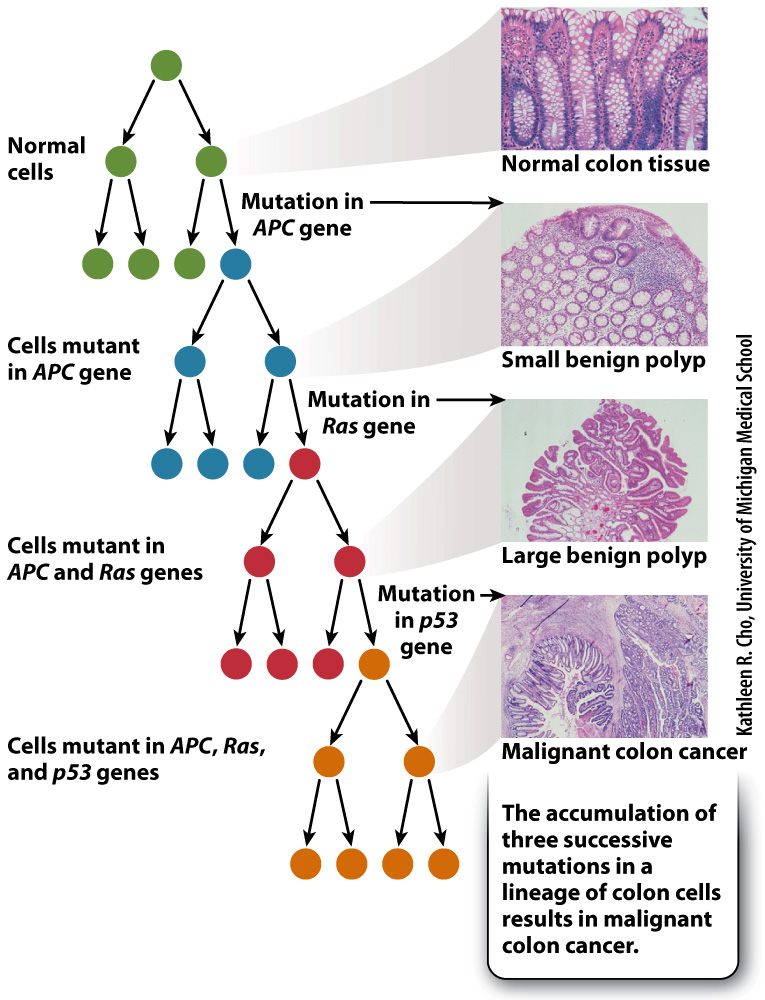Only germ-line mutations are transmitted to progeny.
Which is more important—
For germ-
For somatic mutations, the mutation rate that matters is the rate of mutation per nucleotide per replication. Although somatic mutations are not transmitted to future generations, they are transmitted to daughter cells in mitotic cell divisions (Chapter 11). Hence, a somatic mutation affects not only the cell in which it occurs, but also all the cells that descend from it. The areas of different color or pattern that appear in “sectored” flowers, valued as ornamental plants (Fig. 14.3), are usually due to somatic mutations in flower-

Most cancers result from mutations in somatic cells (Chapter 11). In some cases, the mutation increases the activity of a gene that promotes cell growth and division, while in other cases, it decreases the activity of a gene that restrains cell growth and division. In either event, the mutant cell and its descendants escape from one of the normal control processes. Fortunately, a single somatic mutation is usually not sufficient to cause cancer—
To cause cancer, the mutations must occur sequentially in a single cell line. Fig. 14.4 shows three key mutations that have been implicated in the origin of invasive colon cancer: p53, Ras, and APC. Each mutation occurs randomly, but if, by chance, a mutation in the Ras gene occurs in a cell that is derived from one in which the APC gene has been mutated, that cell’s progeny forms a polyp. Another chance mutation in the same cell line, which now carries mutations in both the APC and Ras genes, could lead to malignant cancer. Normally, the occurrence of multiple mutations in a single cell lineage is rare, but in people exposed to chemicals that cause mutations or who carry mutations in DNA repair processes, multiple mutations in a single cell lineage are more likely to occur and so the risk of cancer is increased.
